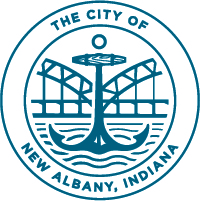Over the course of several years, the city has been analyzing the public housing stock and ways that we can better serve those in public housing through improved conditions, access to programs and services, and more.
“We are committed to serving all residents of New Albany, especially those who are in the most need. Our ten-year plan will improve housing conditions and supportive services for all residents of the New Albany Housing Authority and surrounding neighborhoods,” stated Mayor Jeff Gahan.
Below are some of those findings, and steps the city and Housing Authority are taking to improve public housing in New Albany.
Public Housing Facilities are in Poor Condition
Public housing facilities are in poor condition, and not just locally. During an inspection this year, numerous instances of both mold and roof leaks were found in public housing properties, in both common areas and in units. In addition to the mold and roof leaks, properties were also shown to have been poorly or improperly maintained, with broken cast iron, massively clogged drain pipes, and broken-down playground equipment for children.
National Budget Underfunded
The New Albany Housing Authority, a federal program, is severely underfunded for the amount of people it serves. Building conditions are suffering, and projected national budgets do not have a way to pay for the upgrades necessary. Across the country, the US Department of Housing and Urban Development (HUD) estimates that $26 billion would be needed to bring all properties across the nation back into good condition. Here in New Albany, that estimate is $138 million.
Housing Authority Properties are Too Concentrated
The New Albany Housing Authority properties are too densely concentrated in certain areas. Concentration is not ideal, and isolates residents from transportation, jobs, and other important services. Excessive concentration of subsidized housing is not consistent with current federal policy or the city’s comprehensive plan.
A Plan Forward
The city entered into an agreement with the Housing Authority early this year to jointly develop a long-term plan on how to move forward, focusing on three major objectives:
1. Better serve housing residents and surrounding neighbors
Not only are the physical conditions of properties suffering, but access to services has been lacking as well. Within the last several months, steps have been taken to improve medical services, building conditions, and resources available to public housing residents. Through partnerships with IUS, Lifespring, Hope Southern Indiana, and others, a wellness center and full medical office will be locating in Housing Authority properties. This effort will bring much need health and medical services to both children and adults.
2. Improve public housing properties
A modernized, neighborhood friendly layout of public housing properties can lead to better access to transportation, jobs, and other important services. By utilizing a mix of housing vouchers and newly constructed units in mixed-income developments, concentration can be lowered and residents can be better served.
3. Reach a sustainable model
The current funding model for public housing is not adequate enough to properly serve residents. A new, modern plan must be developed that will better serve residents and be sustainable in the future.
What’s happening now?
Currently, the housing authority is conducting a physical needs assessment and inspection of all Housing Authority properties. They are anticipating this work will be complete in early 2018. This assessment will provide a detailed inventory of the condition of NAHA-owned properties, and will detail physical conditions of each unit, including structural assessment, building systems and components (HVAC, Plumbing, electrical systems, etc.) mold detection, air quality assessments, and other items.
The city is also gathering an inventory on vacant homes and properties that could be rehabbed or developed into mixed-use housing to accommodate a housing choice voucher. According to the 2014 US Census, there are 2,259 vacant housing units in New Albany.
This data is needed to submit to HUD before a final housing plan can be completed. After receiving the assessment, HUD can better make a determination and approval for any changes to the public housing stock that will be implemented.
“We are hopeful that through a combination of Housing Choice Vouchers, Rental Assistance Demonstration, and other programs that we can work to improve the public housing program in New Albany,” stated interim Housing Director David Duggins.







